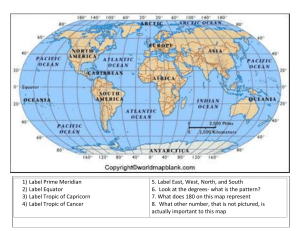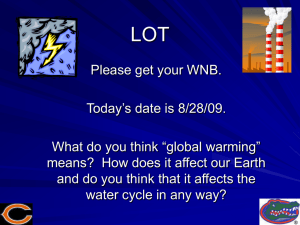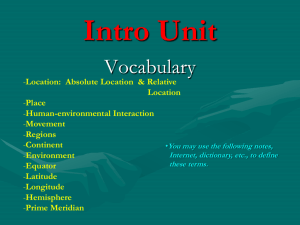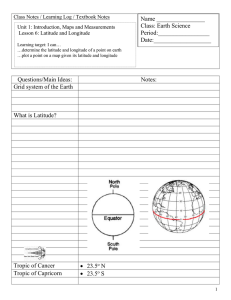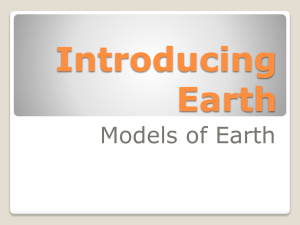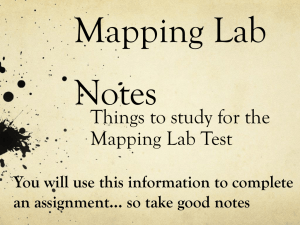Latitude, Longitude, and Time Zones Lat. and Long. form a grid
advertisement
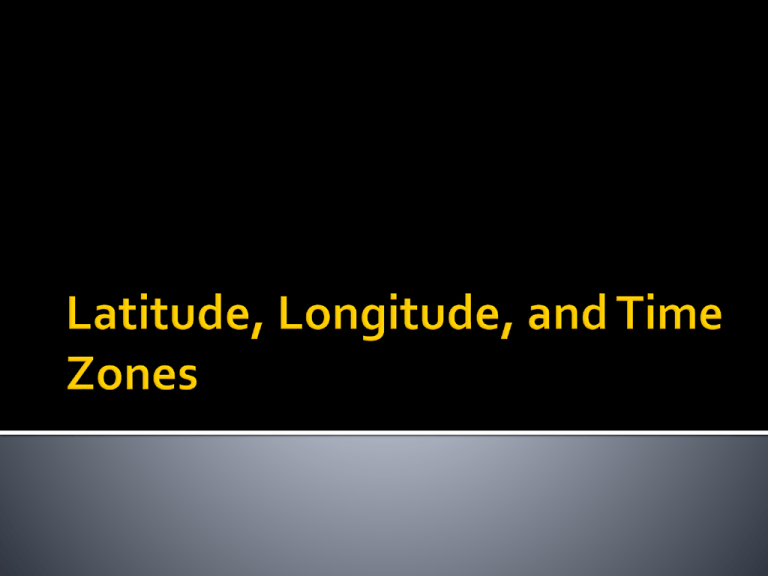
The point of latitude and longitude is be able to pinpoint any location on the Earth. They form a grid that should look kind of familiar… Latitude lines: Are parallel (never meet or touch) Run East to West Range from 0°–90° North and South Dumb way to remember: ▪ Latitude = “Laddertude” Equator Half-way between North and South Poles 0 ° , Neither North nor South Tropic of Cancer 23.5° North Tropic of Capricorn 23.5° South Arctic Circle 66.5° North Antarctic Circle 66.5° South Yes, these are important and we will talk about them further later on. Longitude lines: All meet at the North and South Poles Run North to South Range from 0°–180° East and West Dumb way to remember: ▪ Longitude = Long, tall telephone poles Prime Meridian Runs through Royal Observatory, Greenwich, England 0°, neither East nor West International Date Line Opposite Prime Meridian 180°, both East and West Latitude, Longitude For example: Farmington, Utah 40°N, 111°W N,W - All of North America •N,E – Most of Europe, Africa, and Asia •S, W – Most of South America •S, E – All of Australia and a chunk of Africa 360° ÷ 24 hours = 15° longitude for every hour of the day. LA is three hours behind New York. You need to be able to convert times to local time by looking at a map.
